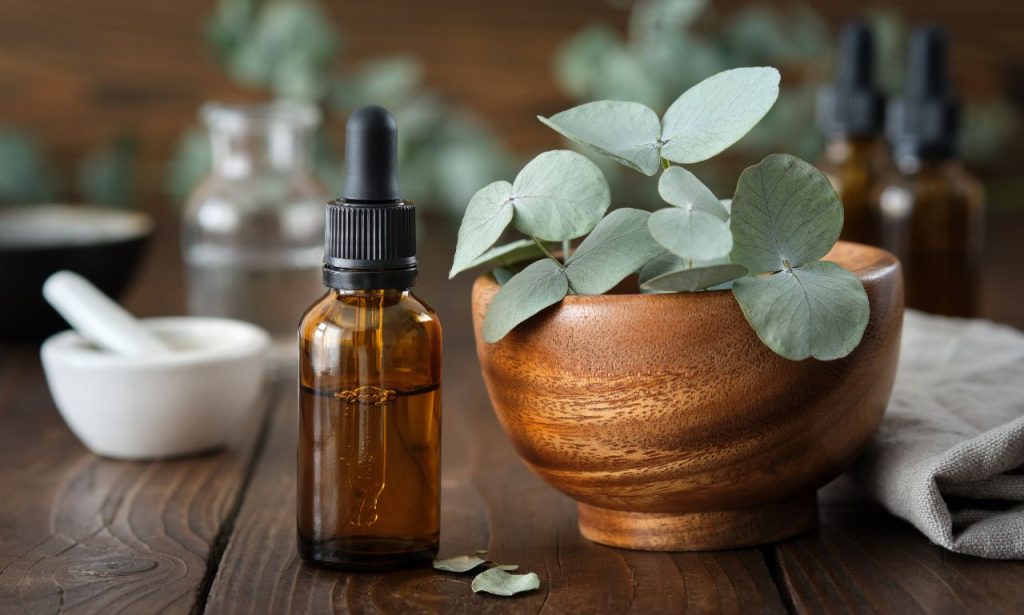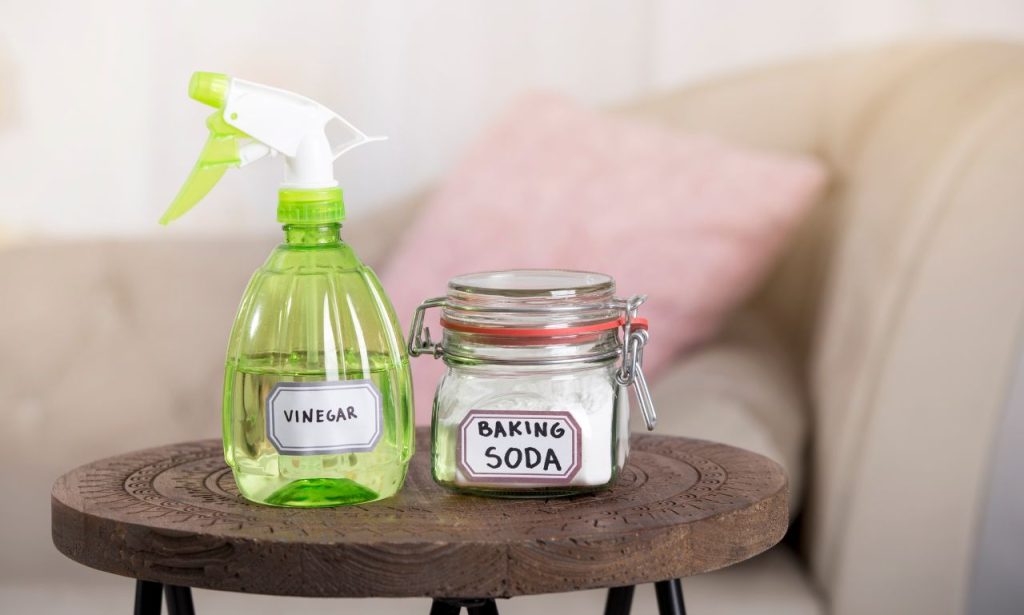Are you tired of dodging buzzing visitors whenever you step into your backyard? I’ve been there! After hosting a summer barbecue that quickly became a bee convention, I began exploring natural ways to reclaim my outdoor space without harming these essential pollinators.
Bees play a crucial role in our ecosystem, but that doesn’t mean they must take over your yard. Whether you’re allergic to bee stings or want to enjoy outdoor activities without unwanted guests, this guide will walk you through practical, natural methods to keep bees at a respectful distance.
Use Essential Oils
Bees have an incredibly sensitive sense of smell, and certain scents send them flying in the opposite direction. Creating your essential oil spray is surprisingly effective and couldn’t be simpler.
Last summer, I tried several different essential oil combinations in my backyard. The peppermint oil spray worked wonders during our family reunion picnic—no bee interrupted our meal! Mix 10-15 drops of peppermint oil in a spray bottle with a cup of water and apply it to outdoor furniture, deck railings, and doorways.
Other effective essential oils include:
Eucalyptus Oil

Eucalyptus has a strong menthol-like scent that bees tend to avoid. Create a spray by mixing eucalyptus oil with water, or soak cotton balls in the oil and place them strategically around your outdoor living areas. Refresh these every few days, especially after rain, to maintain effectiveness.
Tea Tree Oil
Tea tree oil’s medicinal scent is an excellent bee deterrent and offers antimicrobial benefits. Add 15-20 drops to a water-filled spray bottle and mist areas where bees commonly gather. This solution is particularly effective around pool areas, where bees might otherwise come looking for water.
Citronella Oil
While most commonly known for repelling mosquitoes, citronella oil also helps keep bees at bay. Its lemony scent masks the sweet smells that attract bees to your yard.
Citronella Candles
Speaking of citronella, these familiar yellow candles aren’t just for mosquito control! Strategically placing citronella candles around your outdoor gathering creates a scent barrier that discourages bees from joining your party.
For maximum effectiveness, light the candles about 30 minutes before your outdoor activity begins. Place them around the perimeter of your gathering space, focusing on areas where food will be served.
Avoid Sweet Smelling Fragrances
One common mistake many outdoor enthusiasts make is wearing sweet-scented perfumes, lotions, or hair products. These fragrances can act like a dinner bell for bees!
When planning outdoor activities, opt for unscented soaps, lotions, and hair products. If you must use scented products, choose those with citrus or mint notes. These are less likely to attract bees than floral or sweet scents.
Grow Bee-Deterring Plants
While bees are attracted to many flowering plants, some repel them. Creating a natural barrier with these bee-deterring plants can help keep your primary outdoor living spaces bee-free.
Mint-Family Plants
Peppermint, spearmint, and other members of the mint family emit scents that bees typically avoid. Growing these plants around the perimeter of your patio or deck creates a natural barrier. As a bonus, you’ll always have fresh mint for summer drinks and recipes!
Cucumber Plants
Oddly enough, cucumber plants’ acidity deters bees. Growing cucumbers near your outdoor seating areas can help reduce bee traffic while providing a delicious harvest.
Basil
This versatile herb enhances summer dishes and helps keep bees away from your outdoor dining area—plant basil in pots around your patio or garden beds near seating areas.
Modify Your Yard to Be Less Bee-Friendly
Making simple changes to your yard’s habitat can significantly reduce bee activity without causing harm to these important pollinators.
Remove Standing Water Sources
Bees need water, especially during the hot summer months. Eliminate unnecessary standing water in your yard, such as birdbaths, pet dishes, or garden saucers. If you have a swimming pool, keep it covered when not in use.
Add a few drops of peppermint oil to the water for birdbaths and water features you want to keep. This deters bees while remaining safe for birds and other wildlife.
Seal Garbage Cans and Compost Bins
Sweet smells from trash and compost quickly attract bees. Use tight-fitting lids on garbage cans and compost bins, and clean them regularly to remove residual sweet smells that might linger.
Remove Fallen Fruit
If you have fruit trees in your yard, promptly remove fallen fruit. Rotting fruit provides an ideal food source for bees and other insects. Consider harvesting fruit slightly earlier to prevent it from falling and attracting unwanted visitors.
Vinegar Solutions

Vinegar’s strong scent repels many insects, including bees. Create a simple spray by mixing equal parts white vinegar and water, then apply it to areas where bees tend to gather.
Try apple cider vinegar with a few drops of lemon essential oil for a more pleasant-smelling option. This combination works effectively while providing a more tolerable scent for human noses.
Apply your vinegar solution to outdoor furniture, railings, and around doorways. Remember to reapply after rain or every few days to maintain its effectiveness.
Avoid Wearing Bright Colors and Floral Patterns
Bees are naturally attracted to bright colors and floral patterns resembling their favorite food sources. Opt for muted colors like khaki, gray, or white outdoors, especially during peak bee season.
This simple wardrobe adjustment can significantly reduce your chances of attracting curious bees. Save those vibrant floral prints for indoor gatherings or lower bee activity.
Keep Food and Drink Covered During Outdoor Meals
Nothing attracts bees faster than sweet foods and drinks left uncovered during outdoor meals. To protect your culinary offerings, use food covers, plastic wrap, or containers with tight-fitting lids.
For beverages, consider:
- Using cups with lids and straws
- Covering pitchers with plastic wrap between servings
- Checking soda cans and bottles before drinking (bees can crawl inside!)
Creating a designated food-serving area away from your main seating can also help. This lets you keep food covered until needed and minimizes bee interactions with guests.
What Smell Do Bees Hate the Most?
Through research and personal experience, I’ve found that peppermint consistently ranks as the scent bees dislike most. The strong menthol component in peppermint oil overwhelms their sensitive smell receptors, effectively creating a “no-fly zone.”
Other highly effective scents include:
- Eucalyptus
- Tea tree
- Cinnamon
- Garlic
- Vinegar
Combining these scents can create an even more effective deterrent. My go-to mixture combines peppermint and tea tree oils with a splash of white vinegar – it’s kept my patio bee-free through two summers now!
Do Dryer Sheets Repel Bees?
Yes! While it might sound like an old wives’ tale, dryer sheets can help repel bees. The potent synthetic fragrances in most dryer sheets interfere with bees’ ability to detect food sources and communicate with their hive.
To use this method, tuck fresh dryer sheets under outdoor cushions, attach them to the underside of tables, or place them in decorative containers around your outdoor space. Replace them every few days or when they no longer emit a noticeable scent.
How Do I Get Rid of Bees ASAP?
If you’re facing an immediate bee situation and need quick results, try these rapid-response techniques:
Create a Vinegar Spray Perimeter
Mix equal vinegar and water in a spray bottle and create a perimeter around your outdoor gathering area. While this won’t permanently relocate bees, it can provide temporary relief for a planned outdoor event.
Set Up Decoy Food Sources
Place a small dish of sugary water or fruit juice at the far edge of your property, away from your gathering space. This creates an alternative food source that draws bees away from your main activity area.
Use Garlic-Infused Spray

Crush several cloves and steep them in hot water. Once cooled, strain the liquid into a spray bottle and apply it around your outdoor space. The potent odor repels bees effectively but dissipates within a few hours, making it perfect for temporary relief.
Contact Professionals for Active Nests
If you’re dealing with an active nest or aggressive bee behavior, it’s best to contact professional pest control services. Many companies now offer bee relocation rather than extermination, protecting these crucial pollinators while solving your immediate problem.
Conclusion
Creating a bee-free yard doesn’t mean declaring war on these important creatures – it’s about establishing boundaries that work for you and them. By implementing these natural repellent strategies, you can enjoy your outdoor space without worry while supporting bee populations in less intrusive locations.
Remember that bees play a crucial role in our ecosystem and food chain. The goal isn’t to eliminate them but to redirect them to areas where they won’t interfere with your outdoor enjoyment.
Start with simple solutions like essential oil sprays and strategic planting, then adjust based on what works best in your specific environment. With some trial and error, you’ll find the perfect balance for peaceful coexistence with our buzzing neighbors.
ALSO READ: How to Make Car Smell Fresh
FAQs
Most natural bee repellents are safe around children and pets, but essential oils should be diluted properly. Keep concentrated oils out of reach of children, and monitor pets when introducing new scents to your yard.
No, these repellent methods don’t harm bees—they make your immediate area less attractive. The bees will seek out more appealing locations rather than suffer adverse effects.
Most natural repellents need reapplication every 2-3 days or after rain. During peak bee season or for outdoor events, consider refreshing repellents the morning of your gathering.
If you’re hosting someone with a bee allergy, implement multiple repellent strategies simultaneously and have an emergency action plan. Ensure that the person has their emergency medication accessible and knows the location of the nearest medical facility.
Yes, but apply repellents strategically to avoid deterring bees from plants that need pollination. Focus repellents on seating areas and entertainment spaces rather than the entire yard.




